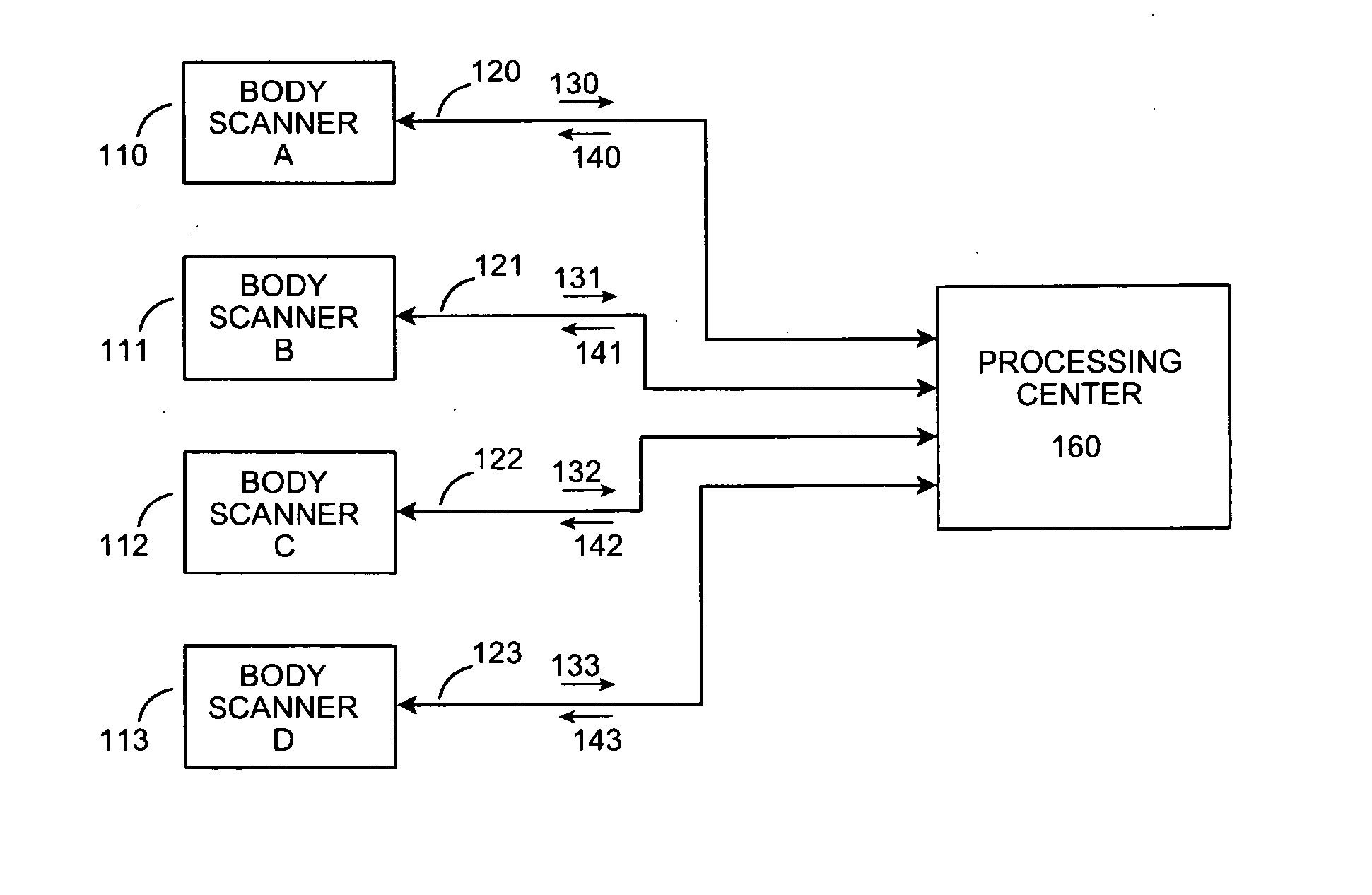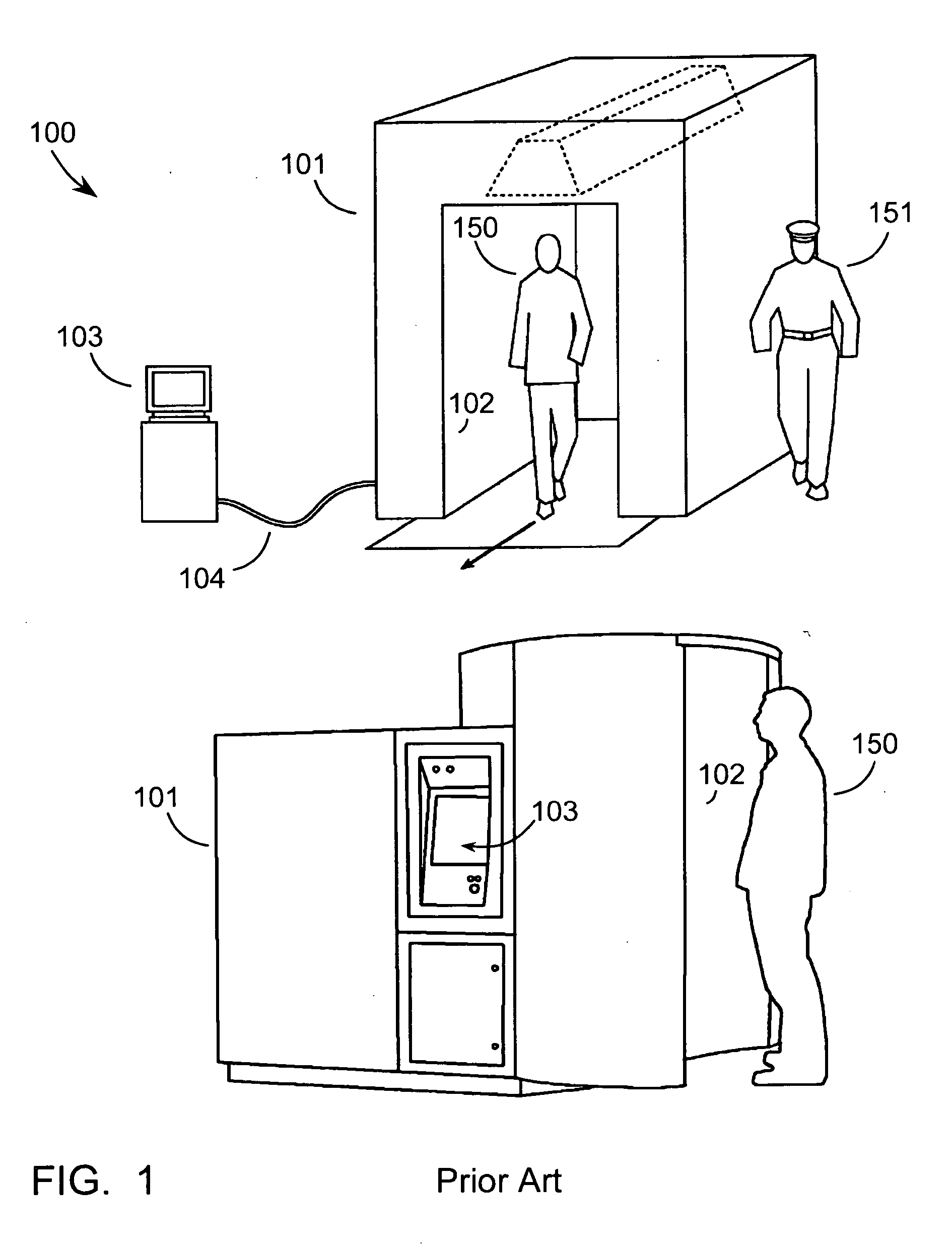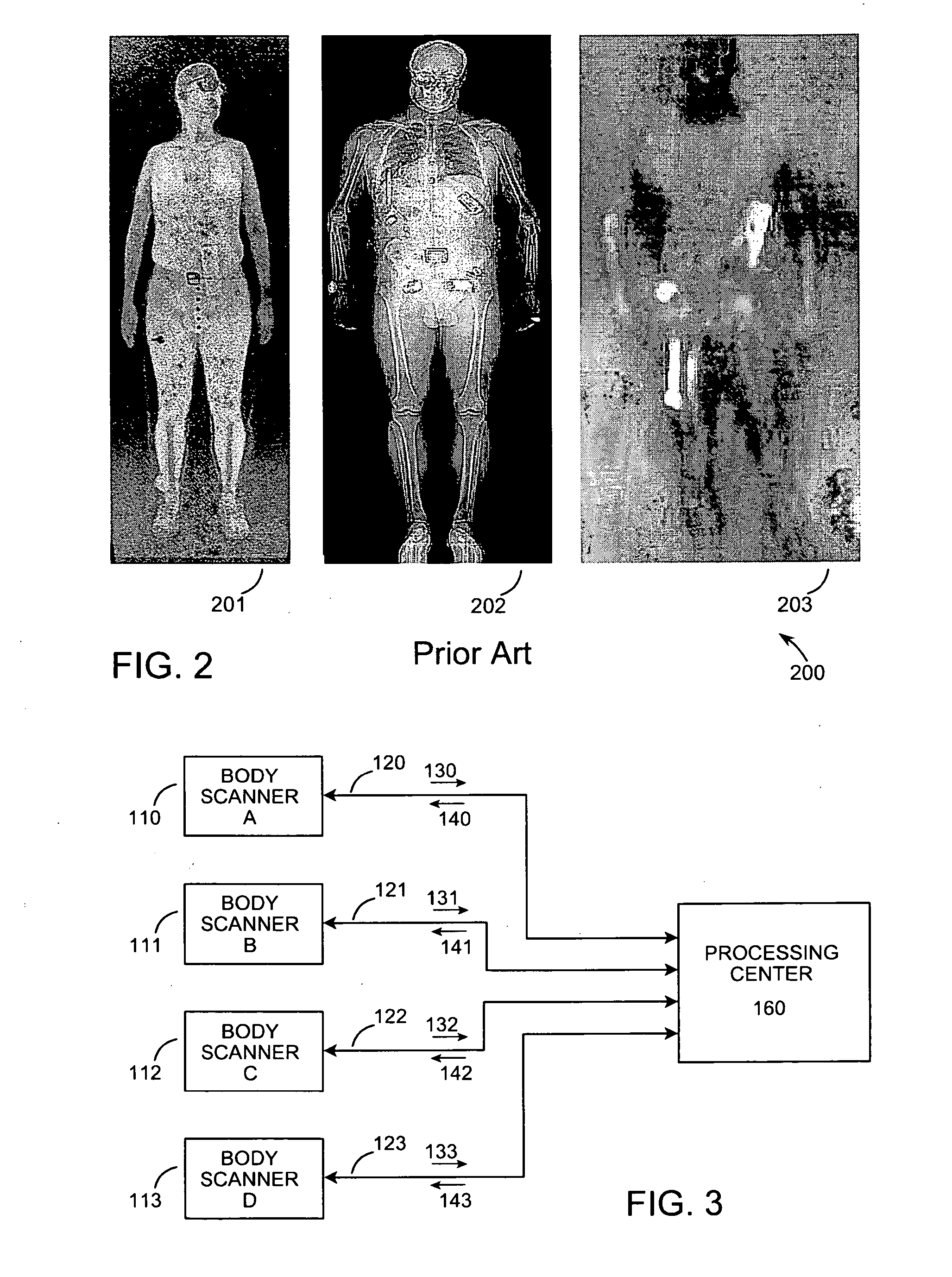Weapon detection processing
- Summary
- Abstract
- Description
- Claims
- Application Information
AI Technical Summary
Benefits of technology
Problems solved by technology
Method used
Image
Examples
Embodiment Construction
[0015]FIG. 1 shows two examples of prior art radiant energy imaging systems used to detect security threats and contraband concealed under the clothing of persons entering security areas. Commonly called “body scanners,” these systems are well known in the art and marketed by a variety of companies, as previously described. The overall body scanner 100 consists of an enclosure 101 that contains the radiant energy detector and, if needed, the radiant energy illuminator. One area on the exterior of the enclosure 101 is the imaging location 102, which is where the subject 150 being screened is positioned for the screening process. During this process the subject may be required to remain stationary, or may be allowed to walk through or by the apparatus, depending on the type of body scanner being used. The image acquisition process typically lasts a few seconds, at which time the electronic image produced by the body scanner is displayed on a computer monitor 103. The monitor 103 may b...
PUM
 Login to View More
Login to View More Abstract
Description
Claims
Application Information
 Login to View More
Login to View More - R&D
- Intellectual Property
- Life Sciences
- Materials
- Tech Scout
- Unparalleled Data Quality
- Higher Quality Content
- 60% Fewer Hallucinations
Browse by: Latest US Patents, China's latest patents, Technical Efficacy Thesaurus, Application Domain, Technology Topic, Popular Technical Reports.
© 2025 PatSnap. All rights reserved.Legal|Privacy policy|Modern Slavery Act Transparency Statement|Sitemap|About US| Contact US: help@patsnap.com



